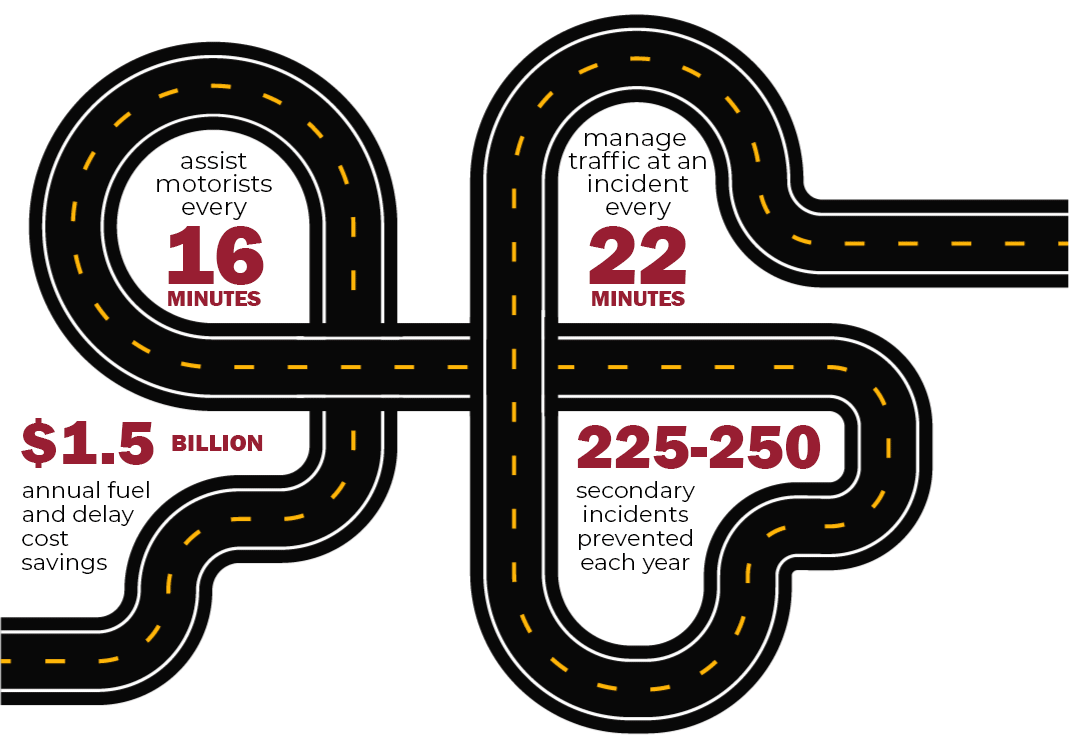CHART Services
CHART Services cover 4 broad categories:
Traveler Information|
Incident Management|
Traffic Monitoring|
Traffic Management
Our state-of-the-art command and control center, known as the Statewide Operations Center (SOC) is the “hub” of the CHART program, functioning 24 hours-a-day, 7 days a week with 3 satellite Traffic Operations Centers (TOCs) spread across the state to handle peak-period traffic.
GPS, traffic signals and incidents feed into live traffic data applications.

Incident Response and Management
CHART Emergency Traffic Patrols (ETPs) have been helping broken-down motorists and assisting police at incidents since the 1980s. The ETP’s primary function is traffic incident management to enhance responder safety, coordinate the quick clearance of Maryland’s travel lanes, improve interagency communications and reduce secondary crashes.
CHART’s incident management services are a multi-agency effort.

Over 40 Emergency Responder Technicians working 24/7 covering 2000 miles of road. Operating in partnership with the Maryland Department of Transportation (MDOT), the Maryland Transportation Authority (MTA) and the Maryland State Police.
ETPs and ERTs Driver Impact

Emergency Traffic Patrols (ETPs) and Emergency Responder Technicians (ERTs) provide over 1.5 billion dollars in fuel savings annually. They assist motorists every 16 minutes and manage a traffic incident every 22 minutes. They prevent between 225 and 250 secondary incidents annually.
Traffic Management
The CHART system strives to manage freeway and arterial traffic flows with the goal of
greater efficiency and
safety.
- Statewide arterial signal systems provide:
- - Remote and adaptive traffic signal control
- - Coordinated signal timing